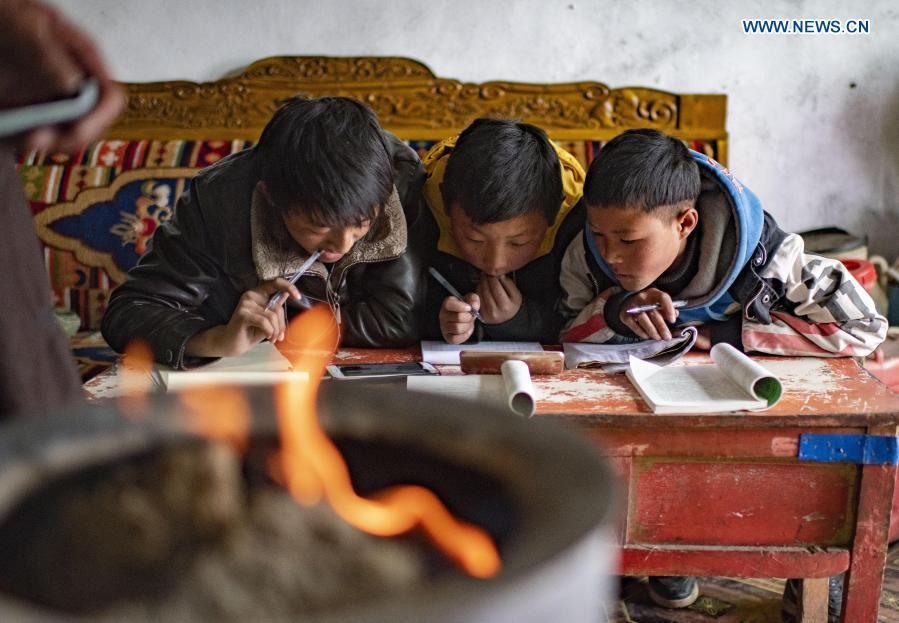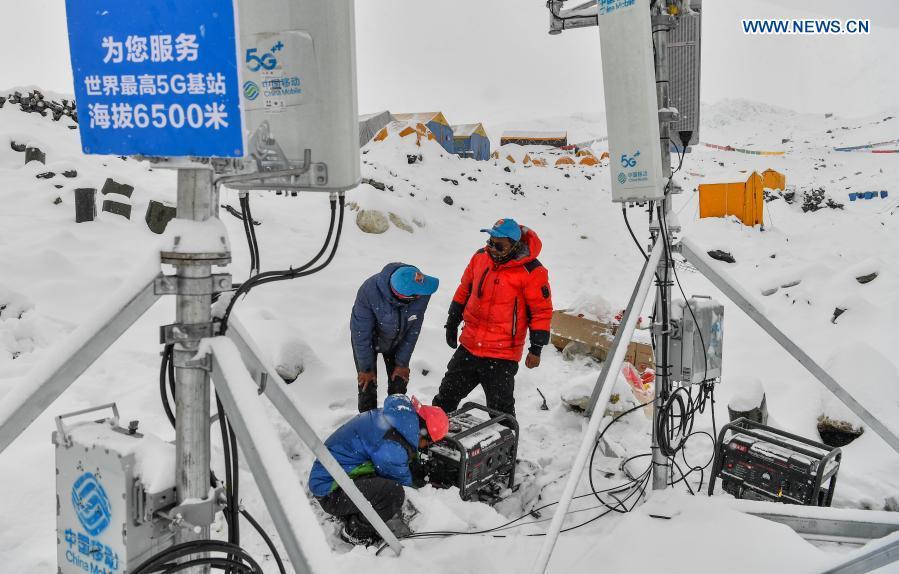Booming e-commerce generates new avenues of income for Tibetans
Xinhua
1609333203000

Students take an online class at home in a village in Damxung County, southwest China's Tibet Autonomous Region, March 6, 2020. Today, 5,417 villages, or 99 percent of all villages in the region, have 4G network coverage, and 5,439 villages have fiber-optic network connections. Aided by broadband and 4G coverage, mobile Internet is transforming the way of life on the plateau. E-commerce is booming, generating new avenues of income for Tibetans. (Photos: Xinhua)

Qime Cering (L), chief of Damxung County, livestreams to promote local products on an e-commerce platform in Lhasa, southwest China's Tibet Autonomous Region, on Aug. 20, 2020. Today, 5,417 villages, or 99 percent of all villages in the region, have 4G network coverage, and 5,439 villages have fiber-optic network connections. Aided by broadband and 4G coverage, mobile Internet is transforming the way of life on the plateau. E-commerce is booming, generating new avenues of income for Tibetans.

Staff members of China Mobile test the signals of the 5G base station built at an altitude of 6,500 meters at the advance camp of Mount Qomolangma in southwest China's Tibet Autonomous Region on May 21, 2020. Today, 5,417 villages, or 99 percent of all villages in the region, have 4G network coverage, and 5,439 villages have fiber-optic network connections. Aided by broadband and 4G coverage, mobile Internet is transforming the way of life on the plateau. E-commerce is booming, generating new avenues of income for Tibetans.

A tour guide (L) speaks during a livestreaming tour in the Potala Palace, a UNESCO world heritage site, in Lhasa, southwest China's Tibet Autonomous Region, March 1, 2020. Today, 5,417 villages, or 99 percent of all villages in the region, have 4G network coverage, and 5,439 villages have fiber-optic network connections. Aided by broadband and 4G coverage, mobile Internet is transforming the way of life on the plateau. E-commerce is booming, generating new avenues of income for Tibetans.

A worker installs broadband network in Bagar Village in Damxung County, southwest China's Tibet Autonomous Region, March 6, 2020. Today, 5,417 villages, or 99 percent of all villages in the region, have 4G network coverage, and 5,439 villages have fiber-optic network connections. Aided by broadband and 4G coverage, mobile Internet is transforming the way of life on the plateau. E-commerce is booming, generating new avenues of income for Tibetans.


